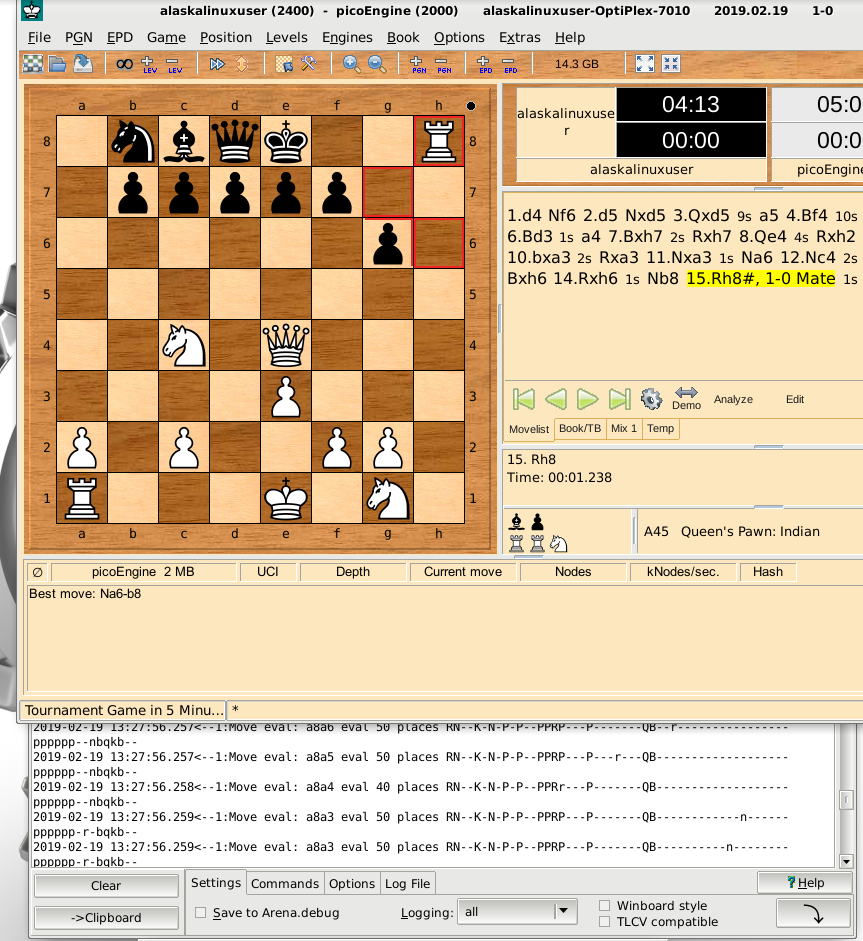
While this may not seem like a real feat to many, I’m actually really excited about this. For the first time, picoEngine actually made an “informed decision” of what move to make. Granted, it is still making poor decisions, but they are at least no longer random.
Keeping in mind that the only evaluation criteria that I have given the engine is that of material difference, so currently, picoEngine is a hungry hungry hippo, because all it can do is attack any piece that comes within range. The downside to this is it will capture a pawn with it’s queen only to have you take back the queen with the defending pawn. So it is not a very bright engine, yet.
If I want to push it to the next level, there are several things I need to do. Currently, it is only searching 1 ply deep, meaning it checks each available move, and then picks the one move that gains the most points after it’s turn. In an ideal computer setup, you would want it to search multiple ply, as in what will it’s turn yield, and what will the evaluation read after the opponents turn. E.g., will they recapture the queen that you marched down there and stole their pawn with?
The commit is actually in two parts, and you are welcome to check them both out on my GitLab. One of the cool things about the current setup, is it does display the information in standard out, so you can actually see the decision being made first hand. The evaluation looks like this:
2019-02-19 13:40:13.611<–1:Move eval: f6g8 eval -10 places RNBQKBNRPPP–PPP———–Pn——————-pppppppprnbqkb-r
2019-02-19 13:40:13.611<–1:Move eval: f6e4 eval 0 places RNBQKBNRPPP–PPP———–PP—p————n—ppppppprnbqkb-r
Still needs some work, but definitely a step in the right direction!
Linux – keep it simple.